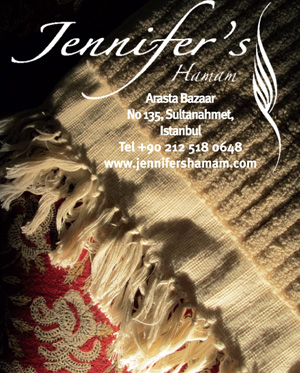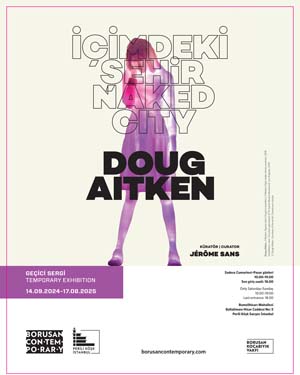This week, HALI magazine marked its 200th issue with a series of celebratory London-based events, including lectures, book launches, an antique carpet and textile art fair, exclusive group access to museum storage and private collections, and a post-event HALI tour of significant English collections of antique carpets and textiles.
There has been so much seen and done in just over 40 years devoted to the dissemination of awareness, interest, knowledge and connoisseurship of the vast field of carpets and textiles, which until HALI’s arrival on the scene was very much the Cinderella of world art.
To begin at the beginning, HALI (the name means carpet in Turkish) was conceived in the months following the first International Conference on Oriental Carpets (ICOC), held in London in 1976. Among others, the key players were Michael Franses, a young, dynamic and academically ambitious London rug and textile dealer, together with Robert Pinner, a scientifically trained specialist oriental carpet collector. Their initial purpose was primarily to provide an ongoing vehicle, supported by trade advertisements, for the serial publication of conference papers, with additional ‘scholarly’ material from elsewhere as well as an element of topical reporting of exhibitions, auctions and publications.
The first issue eventually appeared in the middle of 1978, edited by Ian Bennett, who brought to the venture both vast auction-house-based knowledge of the art world, especially carpets, and an incomparable ability to write with authority, style and at length on any subject to which he turned his mind. Ian left the team in 1979, although he was to return as a frequent contributor some years later. Thereafter, the magazine was edited first by Robert and Michael, then, in turn, by Alan Marcuson (1985-95), by me and, since 2005, by Ben Evans. Remarkable for a small circulation international niche publication, HALI survived several more or less traumatic changes in ownership, management, direction, frequency and style, as well as responded to the challenges posed by geopolitical events, changing markets and the revolution of the internet as an alternative, lowest common denominator, point of access for much of the bread and butter of our field.
I was invited by Robert and Michael to join HALI as assistant editor in spring 1984, despite having little more than a decent education and a very modest interest as a beginning collector of tribal rugs to bring to the table. It was a steep learning curve – and has remained so for 35 years – in the diverse disciplines of carpets and textiles of the whole world on the one hand, and of specialist magazine and book publishing on the other. In that time, I have, through HALI and a shared involvement in the subject, participated in more than a score of major conferences and symposia, visited innumerable museums, exhibitions, fairs and galleries, attended countless auctions, and become acquainted with hundreds, if not thousands, of people from all walks of life, many of whom I now count as colleagues and real friends. Not to forget the literally millions of words, mainly written by others, but also my own, that I have prepared for publication in HALI and in the books and catalogues that we have produced for clients over the years.
So much material, and so many diverse activities, make it impossibly difficult to identify a mere handful of highlights. Inevitably, the largest events, the ongoing series of ICOC and similar clan gatherings, which over the years expanded to include ever more exhibitions and dealer’s fairs, have left some of the most vivid memories. My first ICOC (Vienna/Budapest 1986), with the unforgettable Danube trip during which the foundations for many enduring friendships were laid, and where I encountered, for the first time, many of the ‘luminaries’ of the rug world, who until then had been merely reputations. Or the somewhat frenzied San Francisco ICOC in 1990, which marked the apogee of a decade of Anatolian kilim mania with the unveiling of the McCoy Jones collection at the de Young Museum (as well as the Christopher Alexander collection of early Turkish pile rugs, which have more recently been sold with great success by Sotheby’s in London).
Or Hamburg/Berlin 1993, with Heinrich Kirchheim’s Orient Stars exhibition, a contentious Turkmen show, and Werner Brüggemann’s Yayla exhibition, as well as the fabulous classical carpet collection in Berlin, which has provided the backdrop for many subsequent meetings. Or Leningrad 1988, for a Turkmen rug special exhibition and symposium and again later, by then St Petersburg, for the 2011 ICOC shared with Stockholm. And the romance and spectacle, not forgetting the panorama of great rugs and textiles, encountered in Milan, Florence and Venice in 1999. Or my all too infrequent visits to Istanbul, for fairs, exhibitions and conferences, culminating in 2007 with the wonderful ICOC held there, in which great Anatolian kilims were again writ large in the Josephine Powell collection at the Yıldız Saray, but always against the imposing collections of historical Turkish carpets (and kilims) at both the Turkish and Islamic Arts (TIEM) and Vakıflar museums.
Or Washington DC, which has hosted the ICOC four times. The Textile Museum there, the priceless legacy of George Hewitt Myers, has been the setting for numerous rewarding meetings and great exhibitions of carpets and textiles, most recently Central Asian ikats from the Guido Goldman collection. Or the Philadelphia/NY ICOC in 1996 and the New York Hajji Baba Club anniversary in 2008. And notable gatherings of the American Conference on Oriental Rugs (ACOR) in Boston, Chicago, Seattle, Santa Monica and the San Francisco Bay area. Or ICOC ‘Down Under’, held in Sydney in 2004. Or Doha, with its spectacular Museum of Islamic Art, the home to the best classical carpets that money can buy.
Then there were the great auctions (Elveden Hall, Bernheimer, Rothschild, Vok, Halevim, Blau, Clark, Alexander and many more or less anonymous others), which have provided a continuous parade of fabulous material and world record prices. And great exhibitions, tribal and village rugs at the Barbican and classical carpets at the Hayward Gallery in London, Indian carpets at the Met, Indonesian textiles in Rotterdam. And much more recently the memory of spectacular classical carpets from the Bruschettini collection in the Palazzo Ducale in Urbino. Too many to mention.
And the fairs, nine years of the HALI Fair at London Olympia, for which I co-ordinated the vetting, to TEFAF Maastricht, to ICOC and ACOR dealers’ fairs, Sartirana in Italy, atmospheric Tucson, and to the fascinating world tribal and textile art fairs, especially in San Francisco and Santa Fe, but also in Europe. Again, too many to mention, but all have left behind a mental kaleidoscope of art, mainly but not exclusively carpets and textiles. And I have not even mentioned the nuggets, discoveries and controversies (all plentiful), or spilled the odd bean, while the anecdotes are not fit for publication in a reputable magazine.
Representing HALI at all of these and other events and in other places, as part of a diverse, intangible community, filled with eccentric characters but united by generously shared interests, has immeasurably broadened my knowledge and perspective and widened my circle of collegial acquaintance and friendship. For me, that is the true highlight.
Everything mentioned above, and so much more, can be found within the pages of HALI, which is published quarterly and is available by subscription in print and online editions, with subscriber access to all back issues online.
Daniel Shaffer is the executive editor of Halı Magazine








